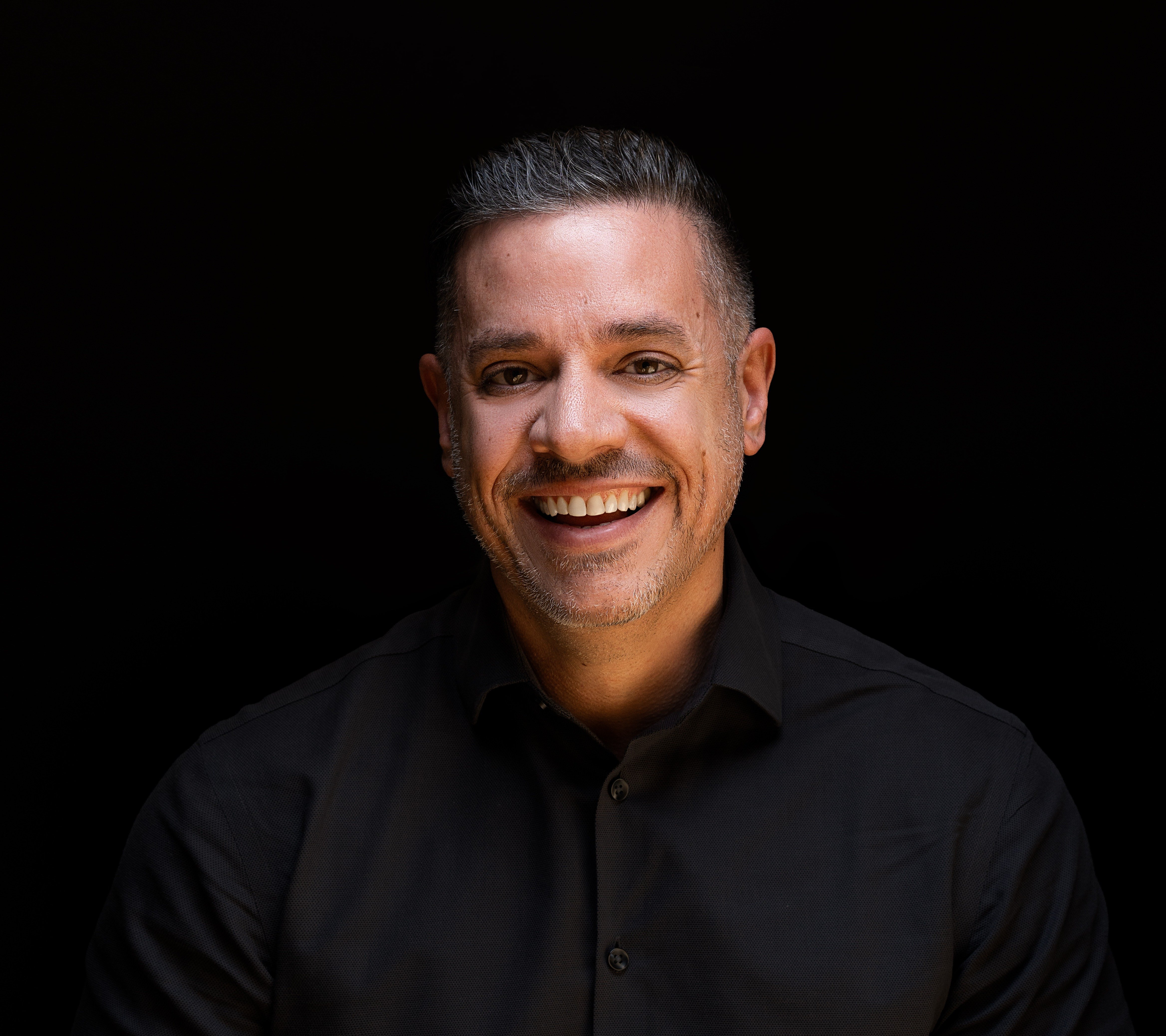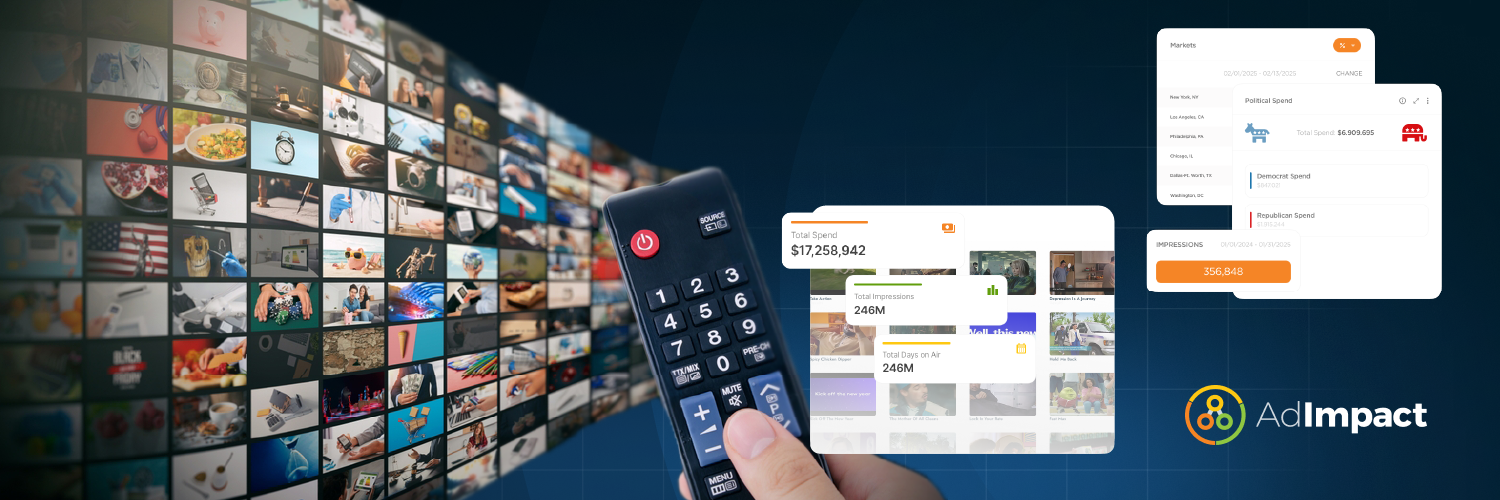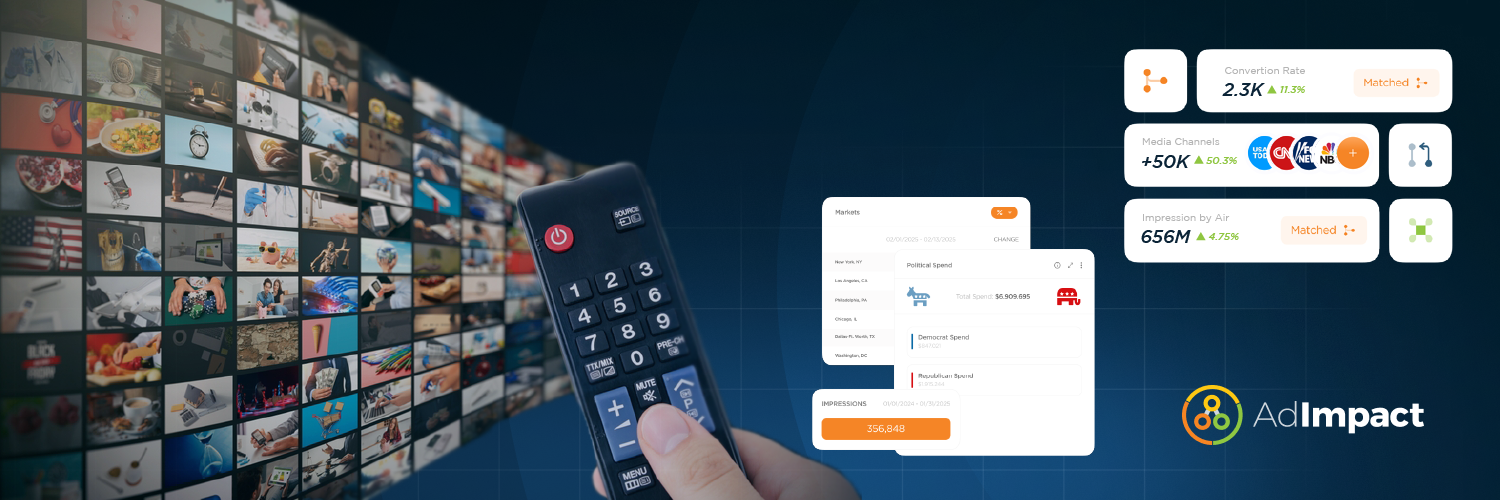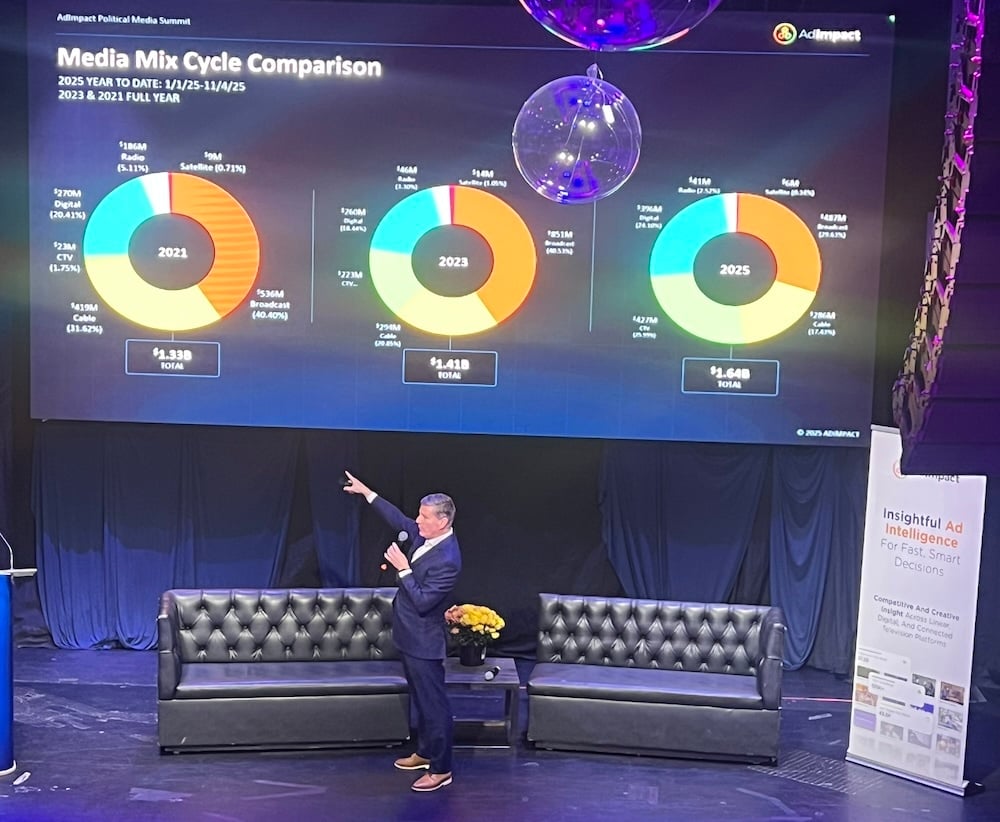While 2025 might be considered an off-year in the political calendar, there are numerous important statewide races, including in New Jersey and Virginia, as well as significant local and downballot races across the country. So far, AdImpact has tracked $614.2 million in aired 2025 ad spending, up from the $358 million and $406.4 million we saw air at this point in 2021 and 2023 respectively. Spending across CTV platforms has nearly doubled, with $110.8 million aired on CTV so far, up from the $58.2 million spent at the same point in 2023.
One notable election from this year is the Wisconsin Supreme Court race, with $67.1 million in spending, far more than the $40.1 million spent on the same race in 2023. The 2025 election saw $40.6 million on broadcast, accounting for 47% of all spending, in comparison $20.7 million was spent on broadcast in the 2023 contest, with it’s overall share at 51.5%. This mirrors the trend seen in the 2024 cycle, where broadcast’s share of spending fell below 50% for the first time. Meanwhile, CTV’s share grew 5% between the 2023 and 2025 Wisconsin State Supreme Court elections, with $20.1 million spent on CTV targeting the 2025 contest.
While broadcast remains the dominant form of advertising, local CTV is another way for downballot candidates to connect with engaged voters. Broadcast ads can be an effective way to reach a wide swath of voters, but CTV can help microtarget voters by reaching consumers on more niche channels, giving their campaign a well-balanced approach to advertising.
Below, we’ll explore how downballot candidates can leverage local CTV to drive results for their next campaign.
Personalized Outreach
Local CTV ads offer programmatic targeting that can provide tailored messaging to specific groups and targeted messages to consumers in specific areas. As a result, campaigns can select certain neighborhoods or tailor their messaging to meet the needs of different groups of voters.
For example, a campaign in the Virginia governor race can run different ads in the northern and southern parts of the state to reflect different constituent priorities. Similarly, a candidate in the New York state Senate race can run ads tailored to the specific needs of families or students.
With this personalized outreach, campaigns can help raise voter awareness, generate engagement, and drive ROI, especially at the tail end of the cycle when voters start tuning into elections.
Expanded Reach
Turning to streaming can also expand the reach of a candidate’s campaign, critical in driving turnout when voters are less likely to turn out for elections. A Google cross-media study found that advertisers who spent on CTV in 2022 were able to effectively reach their target audiences. For instance, from May through July 22 in the Georgia Senate race, YouTube ads reached over 3.5 million people in their target group. In October, a combination of linear and YouTube ads hit over 90% of their key demographic, and over 45% of YouTube ads were viewed on television.
Measurement tools can help advertisers understand the effectiveness of local CTV buys in real-time, enabling them to switch messages or locations quickly so that they can ensure they’re not wasting their spend. Every dollar matters for downballot candidates, so leveraging streaming can help maximize their dollars while also reaching relevant audiences for their campaign.
Primary season is already in full swing, and the November election cycle will be here before long. As political campaigns start planning their ad buys and look to reach persuadable voters, local CTV can help balance out their overarching ad strategy. Local CTV helps downballot candidates reach their target audiences with the most effective messaging possible and ensures that they’re utilizing every possible channel to connect with viewers.










